It is an austenitic chrome-nickel stainless steel that can be found in both the annealed and cold wrought stages of operation. It is designated by the American Iron and Steel Institute (AISI). It has the highest level of stretch formability of any stainless steel when annealed, and when heavily cold worked, it has the highest level of strength of any 300 series stainless steel. Yaoyi’s aisi 301 equivalent is made of stainless steel and has the highest level of stretch formability of any stainless steel.
Myriad’s cold working changes aisi 301 from a nonmagnetic to a magnetic material as a result of this transformation. When annealed, the material retains its nonmagnetic properties.
More importantly, while Yaoyi’s counterpart to Aisi 301 stainless steel is corrosion resistant in a wide variety of settings, its corrosion characteristics are weaker than those of Aisi 304 stainless steel in some situations.
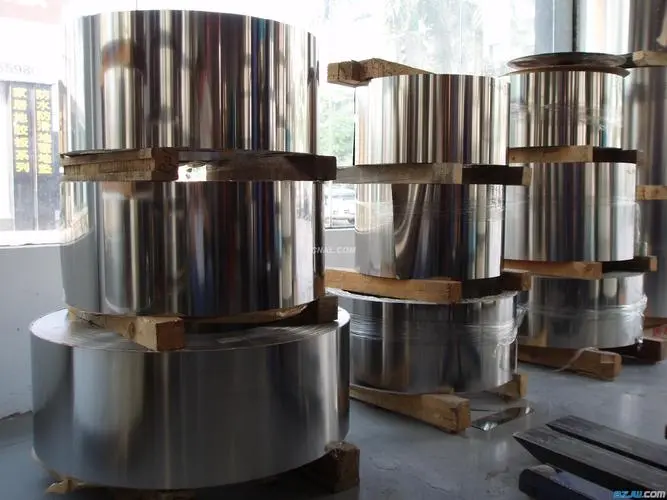
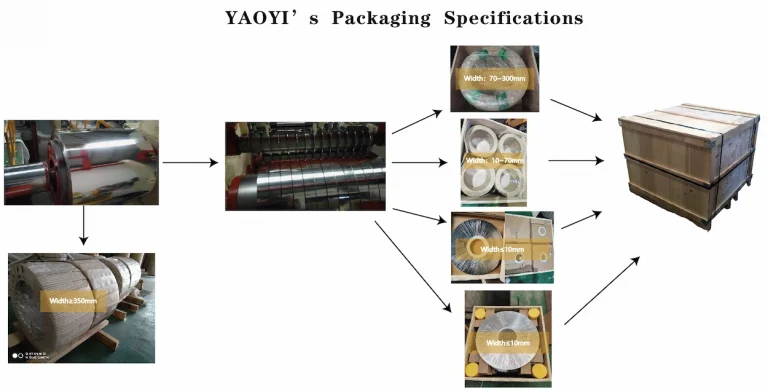
In response to rising demand from China and other emerging markets, the price of alloying elements added to stainless steels has risen significantly in recent years. Nickel prices have more than doubled in the last five years, reaching a level ten times higher than they were previously.
In addition, the prices of chromium and molybdenum have also skyrocketed, as has the price of stainless steel scrap, which steelmakers rely on heavily for their production.
Inevitably, stainless steels have suffered significant price hikes as well, with little hope of a price decrease in the near future. As a result of rising demand and the time necessary to develop new supply sources, nickel and other alloy prices are unlikely to fall back to the levels observed just a few years ago, if at all.
Due to this, higher prices are prompting stainless steel users to look for more cost-effective solutions: the best grade to use is a combination of engineering and economic criteria, and the best grade to use may fluctuate depending on the cost environment in which they operate.
It is estimated that around 60% of stainless steel applications around the world are made from grade 304, which is the most widely used stainless steel grade.
301 stainless steel can also be applied to stainless steel worm gear reducers.
J2 Stainless Steel: A Complete & Thorough Guide
If you are looking for the most cost-effective 301 stainless steel materials and products, choosing us is the best decision you have ever made. Remember to contact us for a free sample and the latest quatation.
The austenitic structure of Yaoyi’s aisi 301 stainless steel, which contains chromium and nickel as its principal constituents, is the most prominent feature of the steel. One of the alloy’s most distinguishing characteristics is that it is nonmagnetic in its annealed state, but when cold worked, it becomes magnetic once more.
As defined by American standards, aisi 301 can be easily adjusted to obtain a wide range of mechanical properties with little effort. For Yaoyi’s aisi 301 materials, quarter hard, half hard, and full hard temper grades are the most common temper grades that are currently available on the market.
Is 301 Stainless Steel Magnetic?
If the austenitic 200 series stainless steels, duplex stainless steels, and ferritic grades are selected, developed, manufactured, and used properly, they can all be used in place of aisi 304 and 316 stainless steels. For further information, see www.stainlesssteels.org.
Because the alloying elements chromium and molybdenum in stainless steel are those that have the largest impact on corrosion resistance, it is appropriate to mention them in this context. It is possible to distinguish between different classes of steel based on their chromium and molybdenum concentrations, which are utilized to discriminate between them within an alternative group in terms of corrosion resistance.
In addition, nickel concentrations in the well-known austenitic Yaoyi’s aisi 300 series grades are among the highest currently available on the market. It is possible to form the austenite crystal structure when manganese is added to the austenitic 200 series grades, which contain less nickel than the prior grades, resulting in the formation of the crystal structure.
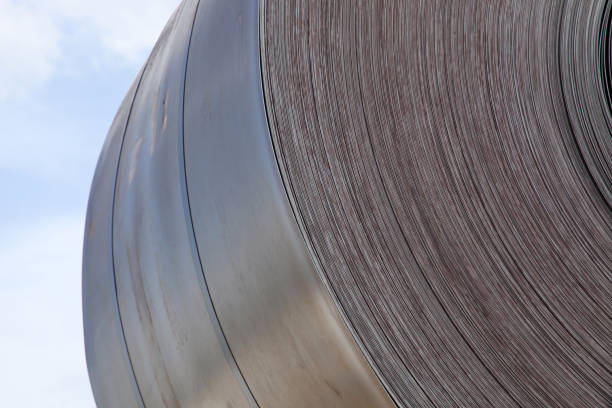
The fact that these grades contain an austenitic crystal structure means that their mechanical and production properties are similar to those of the better familiar 300 series of stainless steel.
Because ferritic grades have the same crystal structure as carbon steel, they have mechanical properties that are identical to carbon steel, as well as manufacturing properties that are identical to carbon steel. The ferritic grades, on the other hand, do not contain any nickel additives.
Duplex grades, on the other hand, are not fully austenitic in their composition. The microstructure is produced to contain an equal amount of austenitic and ferritic grains, which generally means that the nickel content is approximately half that of an austenitic grade with the same chromium content.
Thickeners in millimeters are available in Yaoyi aisi 301 Stainless Steels in thicknesses ranging from 0.2 to 4.75 millimeters, while widths in millimeters are available in widths ranging from 600 to 1200. In addition, the AISI 301 equivalent in stainless steels is available in a variety of slit forms with differing widths to fulfill the needs of different customers.
The following are the different types of aisi 301 equivalent in Stainless Steels that are available:
• Coils that have been milled
• Slitted Coils are a type of coil that has been slit.
• Sheets and plates are two types of metal.
• Bars that are round in shape
Yaoyi’s aisi 304 equivalent contains around 8% nickel, which is required for the creation of the ductile austenite crystal structure in the steel throughout the manufacturing process. This is also a pretty common occurrence.
As well as the more often used grade 316, which includes 10% nickel and has better corrosion resistance due to the addition of 2% molybdenum, the grade 316 is also highly popular. To keep the water clean in marine environments, it is frequently used.
Because users are looking for more cost-effective alternatives to both of these austenitic 300 series grades, which are already accessible at Yaoyi, we have developed a cost-effective option for you.
Stainless Steel Chemical Composition
In addition to chromium, nickel, molybdenum, vanadium, and titanium, the aisi 301 equivalent of Yaoyi is made of the following elements: The next section gives specific details of the chemical alloying compositions that are available.
• The maximum percentage of carbon allowed under the standard is 0.15 percent.
• The maximum percentage of manganese allowed by the standard is 2 percent.
• According to the standard, the maximum proportion of Phosphorus is 0.045 percent.
• In accordance with the norm, the maximum percentage of sulphur is 0.03301.
• According to the standard, the maximum proportion of silicon is one hundred percent.
• The maximum percentage of nickel allowed by the standard is 8 percent.
• In accordance with the standard, the maximum percentage of Chromium allowed is 18, whilst the minimum percentage of Chromium allowed is 16.
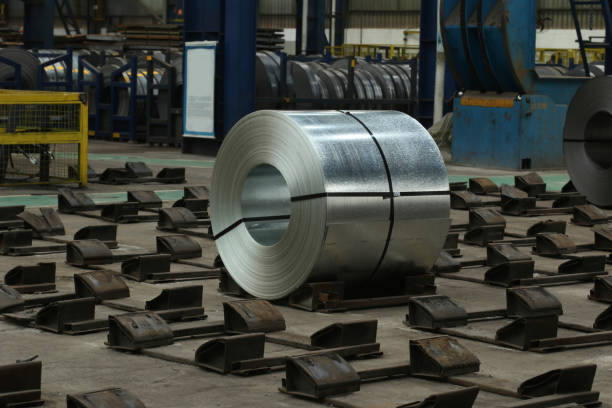
• Temper grades, such as half hard, quarter hard, and full hard, are used to describe the hardness of a metal or alloy.
• According to certain technical sources, the tensile strength for full hard grade starts at 185 Mpa.
• According to certain technical sources, the yield strength for full hard grade is as high as 140 Mpa.
• For complete hard grade in the standard, elongation is 9 percent in 50mm for full hard grade
• The corresponding material is referred to as SUS 301 type steel in the Japanese Industrial Standard.
• 1.4310 type steel is the designation given to the equivalent material under DIN standards.
• The corresponding material is referred to as S30100 type steel in the United Nations Standard.
Stainless Steel Foil Manufacturer
Yaoyi’s aisi 301 counterpart cannot be utilized in some applications due to its sensitivity to carbide precipitation during welding, whereas 304L is used instead due to its reduced carbon content in welded applications, which makes it a better choice in these circumstances.
It is used in a variety of industrial applications, including but not limited to the following: 301 Stainless Steel is used in the following applications:
• Equipment & Utensils for Preparing and Cooking
• Railway Structures and Components
• Automobile Components
• Components for the construction of aircraft
The following are examples of materials that are almost identical:
To begin, railcar components, architectural buildings, and airplanes are all instances of where this material has been used in various applications.
However, it is impossible to convey just how amazing the resistance to food applications and the environment is in terms of numbers. Like 304 grade stainless steel, it is resistant to stress cracking and is hence suitable for use in structural applications.
Specific scenarios necessitate the usage of 316 stainless steel, which can be used in place of aisi 301 type steel in some instances. The grade 316 may be the most appropriate choice when a higher level of corrosion protection is required while simultaneously requiring a lesser level of work hardening phenomena.
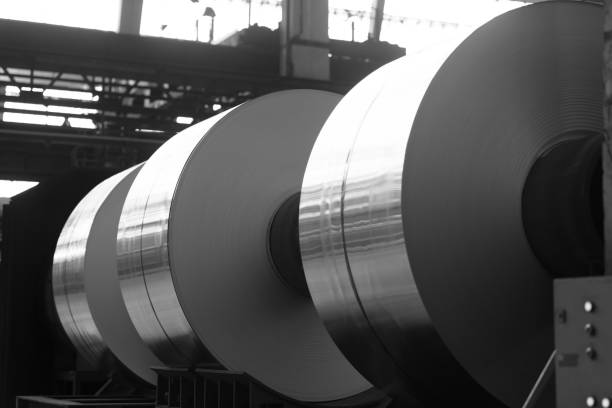
Even in moderately hard environments, Yaoyi’s AISI 301 steel delivers outstanding corrosion resistance that is virtually as good as 304 stainless steel in mild environments.
In addition to wires and strips, Yaoyi’s aisi 301 stainless steel is available in tensile strengths of up to 1800 Mpa in both wire and strip form. This is possible because of the tensile strength, which allows it to process tempers ranging from 1/16 Hard to Full Hard in one operation. AISI 301 wires and strips are available in various sizes and shapes at Yaoyi.
In addition, Yaoyi’s aisi 301 equivalent is subjected to solution treatment annealing at 1120 degrees Celsius, followed by rapid cooling, before being used. Yaoyi’s aisi 301 equivalent material, particularly in its low carbon version, is used primarily in high strength stainless steel applications, according to the International Standards Organization.
It is estimated that the work hardening rates of Yaoyi’s aisi 301 are in the range of a 14MPa increase per hour of exposure, which is fairly substantial. It has been possible to reduce the area of cold work by one percent while still producing rolls of exceptional strength as a result of this feature.
There are cold rolling and forming operations involved in the production process. All common welding procedures, including stick welding, are compatible with Yaoyi’s equivalent grade of aisi 301 (aisi 301 equivalent).
As a result of the cold rolling process, this type hardens at a higher rate than the others. It is more difficult to progress through formability than it is to move through the other grades in the family. While the material is being subjected to strain hardening, the austenite structure of the material is transformed into martensite.
There are various issues to be concerned about throughout the welding process, including the material losing its temper in the weld and the heat-impacted zone. Welding 301 type steel together is most commonly accomplished through the use of spot welding.
Yaoyi’s aisi 301 equivalent displays strong corrosion resistance, as well as excellent oxidation resistance, when used intermittently to provide services at temperatures up to 840°C and continuously to provide services at temperatures up to 900°C, according to the manufacturer. Tempers have ranged from 1001 degrees Celsius up to 1010 degrees Celsius and higher.
However, in order to attain the highest possible level of corrosion resistance, aisi 301 equivalent welded components must be subjected to extensive testing.
Yaoyi’s chosen materials for manufacture have the ability to endure corrosion, and this is what is accountable for this. Steel materials and grades that are resistant to corrosion offer a number of advantages over other materials and grades. The functionality given by the aisi 301 equivalent is comparable to the functionality provided by the 304 counterpart. Using this method at room temperature is beneficial in mildly corrosive environments.
In the end, Yaoyi’s cold rolled 301 type steel provides higher corrosion protection over annealed steel in terms of corrosion resistance when compared to other steels. To reach the appropriate hardness without the need of annealing, this grade is hardened by cold working, specifically cold rolling, rather than by heating.
Stainless Steel Belt: Characteristics, Advantages, and Applications
Let’s kick things off by painting a picture of AISI 301, the steel grade we know and love. AISI 301, a member of the stainless steel family, is celebrated for its exceptional strength and corrosion resistance. Its versatility is admired across industries, from automobile manufacturing to construction, and even aerospace. But, the big question here is – are there any viable substitutes out there? You bet! Read on as we dive into the fascinating world of AISI 301 equivalents.
To put it simply, AISI 301 equivalents are other steel grades that match (or even surpass!) the strength, durability, and corrosion resistance of AISI 301. These tough contenders bring their unique features to the table, offering you more options in your quest for the perfect steel grade. Let’s not keep you waiting any longer. It’s time to unravel these hidden gems.
Equivalent #1: First on our list, and for a good reason! This equivalent stands tall with impressive tensile strength, mimicking the toughness of AISI 301. Whether it’s for automotive body structures or heavy-duty construction, this equivalent ensures your projects stand the test of time.
Equivalent #2: Meet the sustainability champion! Our second AISI 301 equivalent is renowned for its eco-friendliness, boasting lower CO2 emissions during its production. This doesn’t mean it compromises on performance, though. With corrosion resistance on par with AISI 301, this is a fantastic option for those looking to go green without losing durability.
As we delve into each equivalent, we’ll compare their strengths and unique features with AISI 301, giving you a comprehensive view of what’s on offer. This comparative analysis will help you find your ideal match.
Our AISI 301 equivalents are not just about matching AISI 301’s performance. They often excel in specific applications, outshining AISI 301 in their niches. From the manufacturing of kitchen utensils and surgical instruments to forming parts of aircraft and skyscrapers, AISI 301 equivalents are making their mark. We’ll explore each of these applications in detail to help you understand where these equivalents shine brightest.
Knowledge is power, and we want to arm you with all the necessary information to make an informed decision. To help you out, we’ve compiled a list of the most frequently asked questions about AISI 301 equivalents. From understanding their pros and cons to figuring out their pricing, we’ll tackle it all.
After a deep dive into the world of AISI 301 equivalents, you’re now equipped with the knowledge to make the best choice for your project. Remember, the perfect equivalent is not just about matching AISI 301’s strength or corrosion resistance. It’s about understanding your project’s unique needs and choosing a steel grade that meets these requirements. So, go forth and bring your projects to life with the power of AISI 301 equivalents!
Remember, the world of steel is vast and exciting. Keep exploring, keep questioning, and most importantly, keep building with the best AISI 301 equivalents on the market. Your perfect match is out there waiting for you. Happy hunting!
We’ve introduced you to the concept of AISI 301 equivalents. Now, it’s time to pull back the curtain and reveal their distinct features. Like unravelling the strands of a steel cable, we’ll untwist each element, helping you understand what sets these alternatives apart.
In this journey of discovering AISI 301 equivalents, remember that there’s no one-size-fits-all. Each equivalent shines in its own right, and the best choice depends on the specific needs of your project. That’s why we’re committed to providing you with a comprehensive breakdown, helping you make the best decision. Here’s what you should keep in mind:
Understanding Your Project’s Requirements: Before choosing an AISI 301 equivalent, you need to have a clear understanding of your project’s requirements. Does it require high-temperature resistance, corrosion resistance, or perhaps flexibility for intricate designs? Each AISI 301 equivalent offers unique features that cater to specific needs.
Evaluating Performance Metrics: When looking at AISI 301 equivalents, it’s important to consider how they measure up in terms of key performance metrics like tensile strength, yield strength, and corrosion resistance. We’ll offer detailed comparisons to help you evaluate your options effectively.
Considering Costs and Availability: Lastly, the cost and availability of AISI 301 equivalents can influence your decision. Some AISI 301 equivalents might be more readily available in your region or more cost-effective for large-scale projects.
By now, you have a clear picture of the top AISI 301 equivalents, what they offer, and how to choose the best one for your needs. We hope this information serves as a beacon, guiding you towards your perfect match. And remember, the world of steel is an adventure, and the best way to navigate it is with knowledge and curiosity. So, forge ahead and build with confidence, knowing that you’re making a well-informed choice.